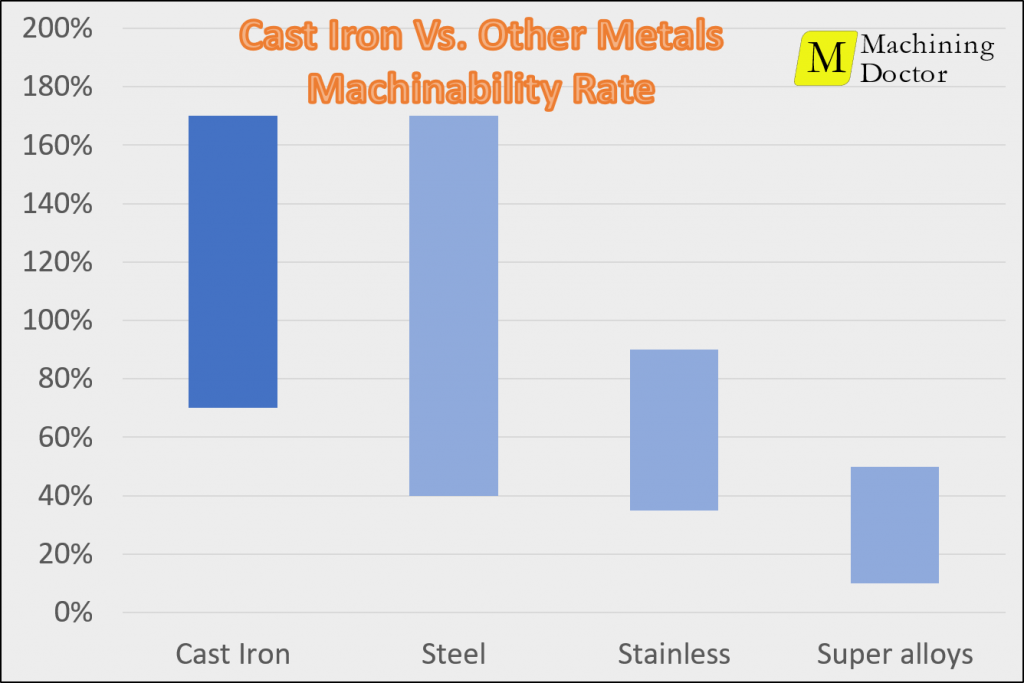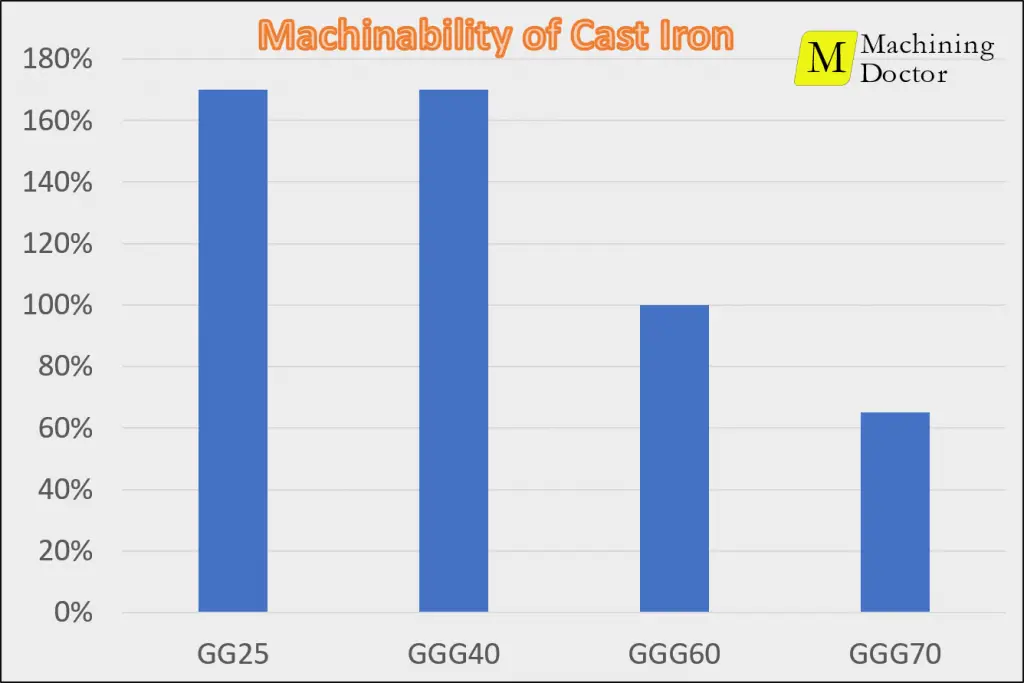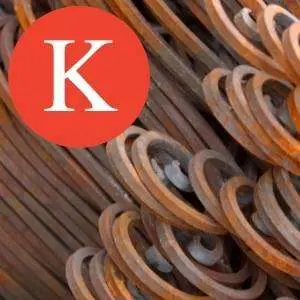Cast Iron is a popular material for mass production components. It is attractive to machine, primarily due to the very small chips it creates at almost any cutting condition. Machinability is relatively high and depends mainly on production quality and hardness. It ranges from almost 200% in soft alloys like GG10, and down to 60% in hard alloys like GGG80.


What is Cast Iron?

Cast Iron is a group of Iron- Carbon-Silicone materials with 1.8-4% of Carbon (C) and 1-3% of Silicon (Si) content. The silicon pushes part of the carbon out of the solution, forming graphite flakes. The material is brittle at room temperature but has a low melting point and thus has excellent castability.
Most cast Iron materials are very brittle, lack the steel’s ductility, and therefore have a lower quality of mechanical properties. On the other hand, small chips form very easily, making them behave like freecut steel with excellent machinability.
The machinability of cast iron depends highly on the quality of the production process. The same material standard can have machinability of 70% from one manufacturer and 150% from another. Therefore, you will also find different machinability ratings listed on different sources. Also, cutting speed recommendations tend to have a wider range than in other material groups. The rating provided on machiningdoctor.com is based on performance with high-quality material. In steel, the material standards usually define only the chemical composition, and the same material can come in different hardness levels (And have completely different machinability rates). In Cast Iron, the material standards also define the allowed hardness range, and hardness is the top-ranking factor affecting various cast iron machinability ratings.
Grey Cast Iron – Machinability
Grey cast iron is characterized by its graphitic flakes that give the material its grey appearance. It has lower toughness than steel; however, it has good resistance to plastic deformation and is therefore widely used for housing components, such as cylinder blocks and gearbox cases. Most of the designations are based on SAE J431, which is related to the material’s hardness.
Nodular (Ductile) Cast Iron – Machinability
In Nodular cast iron, the graphite is formed in round nodules, hence the name nodular. Unlike grey cast iron, it is a tough material with good fatigue resistance. Its mechanical properties are equivalent to plain carbon steel like 1045 and 1020, but with better machinability equivalent in the levels of 1140 and 12L14. It is widely used for Gears and shafts in the automotive industry.
Malleable Cast Iron – Machinability
Malleable cast iron is formed in a slow and long heat treatment process (Several days), yielding a much tougher material, with lower sensitivity to cracking and better impact resistance (compared to grey and nodular iron). The machinability is about 10% lower compared with nodular cast Iron with equivalent hardness. Malleable cast iron can be used only for small components and is typically found in valves and fittings.
Boosting machinability of cast iron with Ceramic inserts
All our discussion so far was based on carbide inserts. However, to further boost cast iron machinability, it is best to move to Ceramic Al2O3 inserts. With this type of advanced cutting material, the cutting speed can be increased up to 2500 SFM (800 m/min), meaning a machinability rate near 400%.









